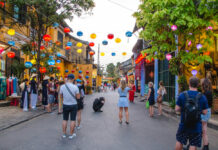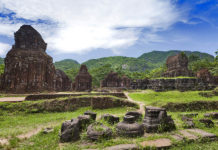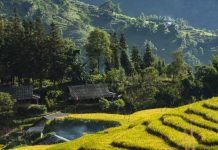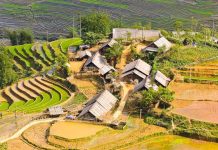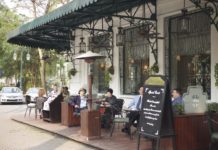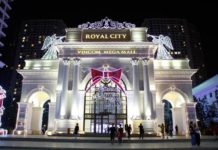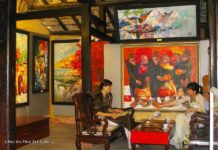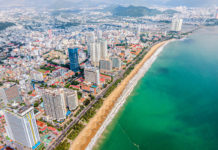If you’re planning a trip to Vietnam, congratulations! You’re about to experience one of the most beautiful and culturally rich countries in Southeast Asia. With its stunning landscapes, delicious food, and friendly people, Vietnam is sure to make your trip unforgettable. However, planning an itinerary for your trip can be overwhelming, especially if it’s your first time visiting the country. In this guide, we’ll walk you through everything you need to know to plan the perfect Vietnam itinerary.
Examples for Planning Your Vietnam Itinerary
Here are some examples of different itineraries you could follow when visiting Vietnam:
- The Classic Tour: If it’s your first time visiting Vietnam, you may want to stick to the classic highlights. Start in Hanoi, where you can explore the charming Old Quarter and take a day trip to Halong Bay. From there, head south to Hue, where you can visit the ancient imperial city. Next, stop in Hoi An to admire the town’s well-preserved architecture and get some custom-made clothes. Finally, end your trip in Ho Chi Minh City (formerly known as Saigon), where you can learn more about the country’s history at the War Remnants Museum.
- The Foodie Tour: Vietnam is famous for its delicious cuisine, so why not plan a trip around eating? Start in Hanoi, where you can sample local specialties like pho and bun cha. From there, head to Hue to try the city’s famous banh khoai pancakes. Next, stop in Hoi An to taste the town’s unique cao lau noodles and fresh seafood. Finally, end your trip in Ho Chi Minh City, where you can feast on everything from banh mi sandwiches to southern-style banh xeo crepes.
- The Adventure Tour: If you’re looking for some excitement, Vietnam has plenty of adventure activities to offer. Start in Hanoi, where you can take a motorbike tour of the city or go hiking in nearby Sapa. From there, head to Ninh Binh to kayak through the stunning Tam Coc caves. Next, stop in Phong Nha to explore the world’s largest cave system. Finally, end your trip in Dalat, where you can go canyoning or mountain biking.
Comparisons for Planning Your Vietnam Itinerary
When planning your Vietnam itinerary, one of the biggest decisions you’ll need to make is whether to travel independently or with a tour group. Here are some pros and cons to consider:
Independent Travel
Pros:
- Freedom to create your own itinerary and travel at your own pace
- More opportunities to meet locals and experience the culture firsthand
- Often cheaper than traveling with a tour group
Cons:
- Need to research and plan everything yourself, which can be time-consuming
- No guide to provide context and insights
- Risk of encountering scams or safety issues, especially if you’re not familiar with the local customs and language
Tour Group Travel
Pros:
- Convenience and ease of having everything planned for you
- Access to knowledgeable guides who can provide insights and context
- Safety and security of traveling in a group
Cons:
- Less freedom and flexibility than independent travel
- Higher cost, especially if you opt for a luxury tour
- Potential for group dynamics to affect your experience (e.g. if you don’t get along with other members of the tour)
Ultimately, the choice between independent and tour group travel comes down to personal preference. If you’re comfortable with planning everything yourself and want more freedom to explore, independent travel may be the way to go. However, if you’re short on time or want the convenience of having everything taken care of, a tour group could be a good option.
Advice for Planning Your Vietnam Itinerary
Here are some tips to help you plan the perfect Vietnam itinerary:
- Be realistic about how much you can see and do in one trip. Vietnam is a large country with diverse regions, so trying to cram too much into a short amount of time will only lead to exhaustion and disappointment. Instead, focus on two or three regions and take your time exploring them.
- Consider the weather when planning your trip. Vietnam has a tropical climate that varies depending on the season and region. Generally, the best time to visit is from December to April, when it’s dry and cool in the north and central regions. The summer months (May to September) are hot and humid, while the autumn months (September to November) can be rainy.
- Research visa requirements and make sure you have all necessary documents before arriving in Vietnam. Depending on your nationality, you may need to apply for a visa in advance or get one on arrival.
- Pack appropriately for the climate and activities you’ll be doing. Vietnam can be hot and humid, so lightweight, breathable clothing is recommended. If you’re planning any outdoor activities like hiking or kayaking , make sure to bring appropriate gear like sturdy shoes and a hat. Don’t forget to pack sunscreen and insect repellent as well.
- Try to learn some basic Vietnamese phrases before your trip. While many people in Vietnam speak English, knowing a few words of the local language can go a long way in showing respect and building connections with locals.
- Make sure to budget appropriately for your trip. Vietnam is generally affordable compared to other destinations in Southeast Asia, but costs can add up quickly if you’re not careful. Research prices for accommodations, transportation, and activities ahead of time to get a sense of how much you’ll need to spend.
Suggested Itinerary 8 days in Vietnam
Day 1: Arrival in Hanoi
– Arrive in Hanoi, the capital city of Vietnam
– Check into your hotel and relax
– In the evening, take a walk around the Old Quarter, exploring the narrow streets and bustling markets
– Enjoy a delicious dinner at a local restaurant, trying traditional Vietnamese dishes like pho or bun cha
Day 2: Exploring Hanoi
– Start your day with a visit to the Ho Chi Minh Mausoleum and learn about the country’s history
– Explore the beautiful Temple of Literature, dedicated to Confucius and Vietnam’s first national university
– Visit the Hoa Lo Prison Museum to gain insight into the country’s colonial past
– Take a cyclo ride around the city’s French Quarter, admiring the architecture and stopping at the iconic Hanoi Opera House
– Enjoy a water puppet show in the evening, a traditional form of entertainment in Vietnam
Day 3: Halong Bay Cruise
– Take a day trip to the stunning Halong Bay, a UNESCO World Heritage Site
– Cruise through the karst islands and limestone cliffs, enjoying the breathtaking scenery
– Explore the hidden caves and go kayaking or swimming in the emerald waters
– Indulge in a fresh seafood lunch on board the cruise
– Return to Hanoi in the evening and relax at your hotel
Day 4: Hoi An
– Fly to Hoi An, a charming ancient town in central Vietnam
– Take a walking tour through the well-preserved old town, admiring the Japanese Covered Bridge, Chinese Assembly Halls, and historical houses
– Explore the local markets and souvenir shops, known for handcrafted lanterns and tailoring services
– Enjoy a sunset boat ride along the Thu Bon River, taking in the picturesque views
Day 5: My Son Sanctuary and Cooking Class
– Visit the My Son Sanctuary, a UNESCO World Heritage Site and ancient Hindu temple complex
– Explore the ruins and learn about the Cham civilization
– Return to Hoi An for a cooking class, where you’ll learn to make traditional Vietnamese dishes
– Feast on your culinary creations for lunch and have the rest of the day to relax or explore the town at your own pace
Day 6: Hue
– Take a scenic drive to Hue, the former imperial capital of Vietnam
– Visit the Imperial City, a vast complex with palaces, temples, and gardens
– Explore the Thien Mu Pagoda, a historic Buddhist temple overlooking the Perfume River
– Take a boat ride along the river to visit the tombs of former emperors, including the majestic Tomb of Minh Mang
Day 7: Ho Chi Minh City (Saigon)
– Fly to Ho Chi Minh City, the buzzing southern metropolis of Vietnam
– Visit the Cu Chi Tunnels, an intricate network of underground passages used during the Vietnam War
– Explore the War Remnants Museum to learn about the country’s wartime history
– Take a stroll through the lively Ben Thanh Market, where you can shop for souvenirs and local products
– Enjoy a farewell dinner at a rooftop restaurant, overlooking the vibrant cityscape
Day 8: Departure
– Spend your final morning in Ho Chi Minh City, visiting any remaining sights or shopping
– Pack and check out of your hotel
– Transfer to the airport for your departure, bidding farewell to the beautiful country of Vietnam
FAQs about Planning Your Vietnam Itinerary
- What’s the best way to get around Vietnam?
There are several options for getting around Vietnam, including trains, buses, and domestic flights. However, one of the most popular ways to travel is by motorbike. Renting a motorbike allows you to explore at your own pace and get off the beaten path, but it’s important to be aware of the potential risks and safety concerns.
- Is it safe to travel independently in Vietnam?
Yes, Vietnam is generally a safe country to travel independently in. However, as with any destination, it’s important to take precautions and be aware of your surroundings. Avoid carrying large amounts of cash or valuables, be wary of scams and pickpocketing, and stay vigilant when crossing busy streets.
- What are some must-see attractions in Vietnam?
Some of the top attractions in Vietnam include Halong Bay, Hoi An Ancient Town, the Cu Chi Tunnels, the Mekong Delta, and Sapa. However, there are plenty of lesser-known gems to discover as well, so don’t be afraid to venture off the beaten path.
- What’s the food like in Vietnam?
Vietnamese cuisine is diverse and delicious, with a focus on fresh ingredients and bold flavors. Some popular dishes include pho (noodle soup), banh mi sandwiches, spring rolls, and grilled meats with rice noodles.
- What’s the best time of year to visit Vietnam?
The best time to visit Vietnam depends on your travel plans and preferences. Generally, the dry season from December to April is considered the best time to visit, but it can be crowded and expensive during this time. The shoulder seasons of May to June and September to November offer a good balance of weather and crowd levels, while the summer months can be hot and humid.
Conclusion
Planning an itinerary for your trip to Vietnam may seem daunting at first, but with some research and preparation, it can be a rewarding and unforgettable experience. Consider your interests, budget, and travel style when creating your itinerary, and don’t be afraid to ask locals for recommendations along the way. Whether you choose to explore independently or with a tour group, Vietnam is sure to leave a lasting impression on you.

